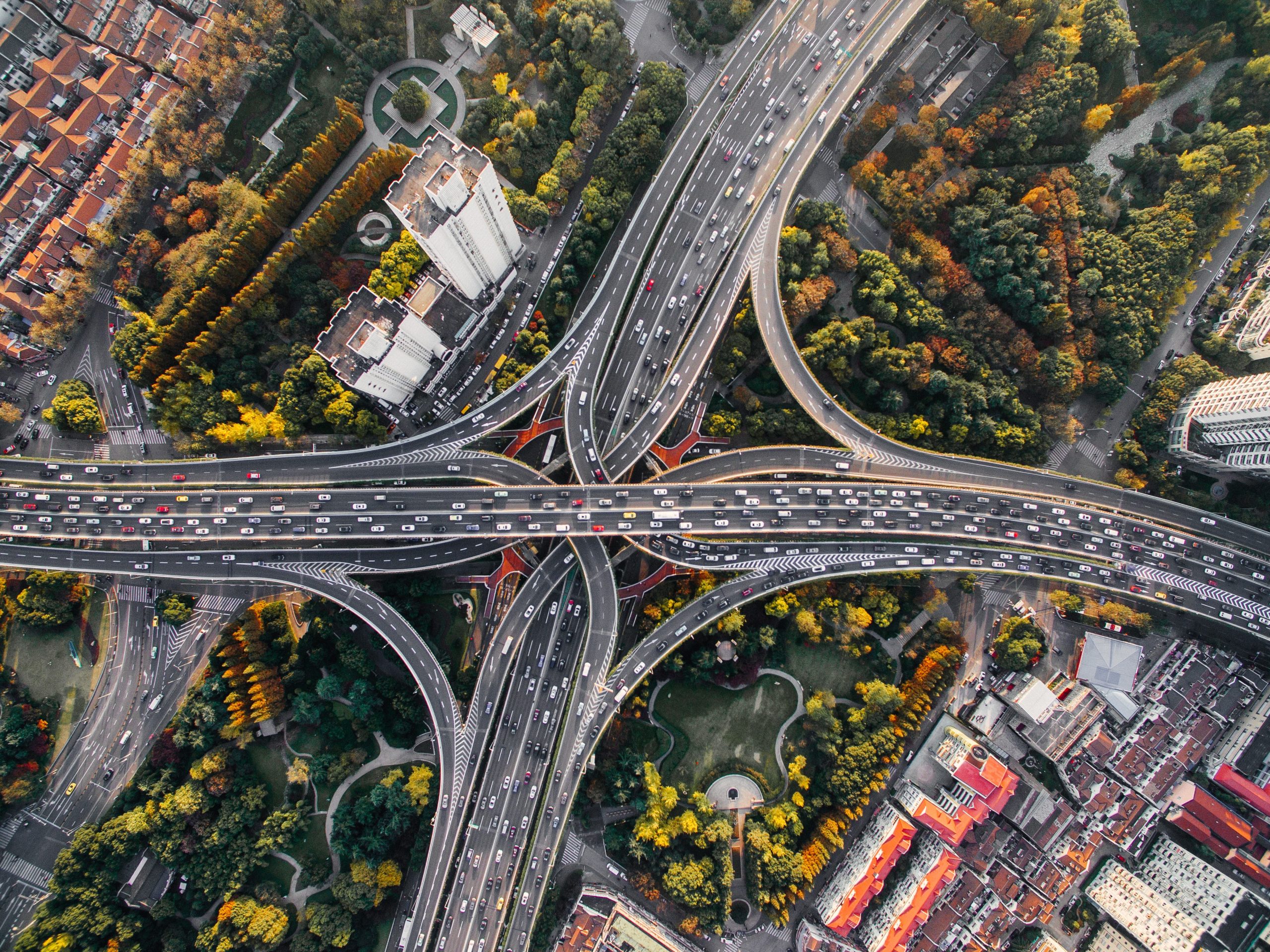Mobility and Urban Design

Billboard
Skyscrapper
Halfpage
Electric scooters have become ubiquitous in many cities in Europe. Bike shares, car ride services, and Bus Rapid Transit lines are other examples of mobility in cities. But what does this mean for urban design?
The challenge of urban mobility
Urban mobility refers to the ease and speed of people, goods, and services moving around in urban areas. Considering that more than half of the world’s population lives in cities already, urban mobility is a key challenge. And by 2050, the number of people in cities will likely double. The fact that urban mobility, especially car-based mobility, also contributes heavily to climate change makes a more sustainable and efficient urban mobility even more important.
According to definitions of urban mobility, the term refers to all aspects of movement in the urban setting. It encompasses different modes of transport, from walking, cycling, and public transportation to driving and logistics. Urban mobility also looks at the spatial arrangement of these modes in the built environment.
Being able to move around cities is a basic requirement for human activities. However, daily trips often take very long or have uncomfortable conditions. Crowded public transportations, traffic jams, or a jumble of pedestrians, cyclists, people on scooters, and other transport modes on the pavement are all examples of urban mobility that is less than ideal.
The importance of better urban mobility
Urban mobility significantly impacts the quality of life in cities. It is about getting people from one place to another, but also about work and leisure activities. The ways people can move without using individual vehicles is an important feature for many cities. Amsterdam and Copenhagen are at the forefront of bicycle-friendly cities where fewer people own cars, and more people use active transport modes: cycling and walking.
Car-free cities are better for the environment, for public health, and even for our mental health. However, almost every city still depends on car travel. The urban design of cities is usually heavily influenced by streets and even highways. These lead to congestions and lack of space for other modes of transport or alternative uses of finite urban space.
Public transport systems provide the availability for people from different backgrounds and neighbourhoods to travel around in an efficient and affordable way. This contributes to Sustainable Development Goal 11, which intends to make cities more inclusive, safe, resilient, and sustainable. Importantly, sustainable transport also supports the Paris Agreement on climate change: By switching to CO2-neutral modes of transport, cities can reduce their CO2 emissions by as much as 25%.

Placing urban mobility at the heart of planning efforts
Providing efficient and sustainable urban infrastructure is an important task of urban planners. By prioritising urban mobility and putting it at the heart of urban policies, it is possible to create better cities. Nowadays, many cities have consolidated into a centre-periphery model. Here, central areas have the highest concentration of opportunities. The further away people live from city centre, the more vulnerable they tend to be. This underscores why mobility is directly related to social inclusion: It allows people to access a city’s opportunities.
Of course, there are many other challenges for urban planning. Housing policies, cost of living, gentrification, and the provision of public spaces are equally important. Still, urban mobility is often the beginning of a sustainable urban design process. The more people can access city centre, the easier it becomes to create healthy, safe, liveable, and sustainable neighbourhoods.
Designing cities for improved mobility can include activities such as implementing a Bus Rapid Transit system with dedicated bus lanes; additional bike lanes; additional tram or metro lines; and reducing car lanes and car parking spaces. These traditional mobility planning activities are often very effective.
For example, the city of Milan implemented pop-up bike lanes during the COVID-19 pandemic, which have now become a permanent and affordable feature of improved mobility.
The future of mobility in cities
Many trends for urban mobility seem futuristic. Self-driving cars, flying drones, and driverless trains will all be elements of urban mobility. In some cities, these technologies are already on trial. Smart and connected cities use a data-driven approach to improve traffic flow and transport options. However, no single technology or innovation can solve the challenges of urban mobility. Rather, each city needs to find an individual strategy to fits the local context.
Often, infrastructure construction is a very important urban design intervention for improved mobility. While less glamourous than futuristic technologies, infrastructure construction can create sustainable cities. For example, many London streets now include charging points for electric cars; and Berlin’s long-term efforts to build a new airport and an additional U-Bahn line will lead to new transport offers.
Above all, urban mobility must be designed to provide greater access to the city for everyone. Less cars, more public transport options, multi-modal connections, and active transport offers will lead to reduced greenhouse gas emissions, less pollution, and a better quality of life in cities.
Read more: Google’s Mobility Reports give fascinating insights on how humans move in cities












